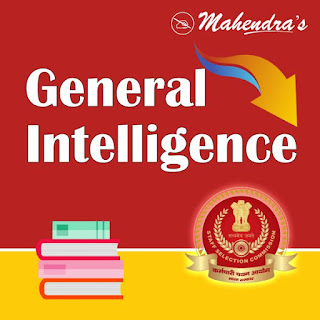Directions (1-5): Each question given below consists of a statement, followed by some arguments. You have to decide which of the arguments is/are ‘strong’ argument(s) and which is/are ‘weak’ argument(s) and accordingly choose your answer from the alternatives given below each question.
1. Statement : Should there be complete ban on Indian professionals seeking jobs elsewhere after getting their education in India?
Arguments :
I. Yes. This is the only way to sustain present rate of technological development in India. II. No. The Indians settled abroad send huge amount of foreign exchange and this constitutes a significant part of foreign exchange reserve.
III. No. The practical knowledge gained by Indians by working in other countries help India develop its economy.
(a) None is strong
(b) All are strong
(c) Only I and II are strong
(d) Only III is strong
(e) Only II and III are strong
2. Statement : Should children be prevented completely from watching television?
Arguments :
I. No. We get vital information regarding education through television.
II. Yes. It hampers the study of children.
III. Yes. Young children are misguided by certain programmes featuring sex and violence. IV. No. This is the only way to educate the masses.
(a) Only I, II and III are strong
(b) Only I is strong
(c) Only I, II and IV are strong
(d) Only I and II are strong
(e) Only I, III and IV are strong
3. Statement : Should admission to all professional courses be made on the basis of past academic performance rather than through entrance tests?
Arguments :
I. Yes. It will be beneficial for those candidates who are unable to bear the expenses of entrance tests.
II. Yes. Many deserving candidates securing high marks in their qualifying academic examinations do not perform well on such entrance tests.
III. No. The standard of examinations and assessment conducted by different Boards and universities are not comparable and hence there is a need to conduct entrance tests to calibrate them on a common yardstick.
(a) Only I and II are strong
(b) Only II and III are strong
(c) Only I and III are strong
(d) Only III is strong
(e) All are strong
4. Statement : Should government established higher level Institutes of Technology (IIT’s) be privatized?
Arguments :
I. Yes. Privatization will make these institutes financially healthy, competitive and quality conscious.
II. Yes. Privatization is the key of the new era-can we survive without it?
III. No. Standard of education of these institutes will fall.
(a) None is strong
(b) All are strong
(c) Only I is strong
(d) Only I and III are strong
(e) Only II and III are strong
5. Statement : Should the consumption of aerated drinks be banned in India?
Arguments :
I. Yes. This is the only way to reduce the risk of exposing people to some diseases.
II. No. Each individual should have right to choose what he wants.
III. No. There is no confirmed evidence that such products have adverse effects on human body.
IV. Yes. It is banned in many other countries also.
(a) Only I is strong
(b) Only I and II are strong
(c) Only III is strong
(d) Only I and IV are strong
(e) All are strong
Directions (6-10): Read the following information carefully and answer the questions that follow:
Eight friends NEETU, NITIKA, NEHA, NISHI, NIKITA, NISHA, NEETA and NISHITA are sitting around a circular table for lunch. Each person has a different birthplace, viz Darbhanga, Dharamsala, Dispur, Durgapur, Dehradun, Delhi, Dhanbad and Darjeeling, but not necessarily in the same order. The person born in Dharamsala sits third to the right of NEETA. NEHA is an immediate neighbour of NEETA. The person born in Durgapur sits second to the right of NEHA. NITIKA sits third to the right of. NISHITA’s birthplace is neither Dharamsala nor Durgapur. Only one person sits between NEHA and the person whose birthplace is Dispur. NEETU and NISHA are immediate neighbours of each other. Neither NEETU’s nor NISHA’s birthplace is Dharamsala. The person born in Darjeeling sits second to the right of NEETU. Two persons sit between NISHI and the person born in Dehradun. NISHI is not from Dharamsala. The person born in Darbhanga is not an immediate neighbour of the person born in Dharamsala. The person born in Delhi sits second to the left of NEETU.
6. Who among the following is from Dhanbad?
a) NEETU b) NISHITA c) NEHA d) NISHA e) NISHI
7. What is the position of NISHA with respect to the person whose birthplace is Dharamsala?
a) Second to the left
b) Second to the right
c) Immediate right
d) Immediate left
e) None of these
8. Where is the birthplace of NEETA?
a) Dhanbad b) Darbhanga c) Delhi d) Dispur e) Durgapur
9. Where is the birthplace of NIKITA?
a) Dhanbad b) Durgapur c) Delhi d) Dharamsala e) Dehradun
10. Who sit(s) exactly between the persons whose birth places are Dispur and Dehradun?
a) NEHA and NISHITA
b) NEHA and NITIKA
c) Only Darjeeling-born person
d) NEETU and NITIKA
e) None of these
SOLUTION
1. (a) 2. (b) 3. (d) 4. (c) 5. (c)6. (a) 7. (b) 8. (b) 9. (d) 10. (c)
You May Also Like: New Pattern Reasoning Questions | BOB AND DENA BANK PO 2017 | 02.05.2017
You May Also Like: New Pattern Reasoning Questions | BOB AND DENA BANK PO 2017 | 02.05.2017








0 comments:
Post a Comment
MAHENDRA GURU